Blue Gemstones: Varieties, Properties & Care Guide

Blue gemstones are some of the most captivating stones in the world of gem collecting and rockhounding. From the deep ocean hues of sapphire to the pale shimmer of aquamarine, these stones are not just beautiful—they're also rich in history, symbolism, and scientific wonder. Whether you're a gem collector, rockhound, or simply someone drawn to the color blue, this guide will help you explore the most popular blue gemstones, their key characteristics, where to find them (especially in the U.S.), and how to care for them.
What Makes a Gemstone Blue?
The blue color in gemstones typically comes from the presence of trace elements like iron, titanium, or copper. The way these elements interact with a mineral's crystal structure determines how light is absorbed and reflected, creating the range of blue hues we see, from icy baby blues to stormy navy tones.
Why Are Blue Gemstones So Popular?
Blue gemstones symbolize calm, wisdom, and depth. They're often associated with the sky and sea, creating a soothing and timeless effect. In jewelry, blue stones complement most skin tones and metal types, making them incredibly versatile.
RELATED READ: 15 Green Gemstones: From Durable Picks to Rare Collector's Finds
Popular Blue Gemstones
1. Sapphire
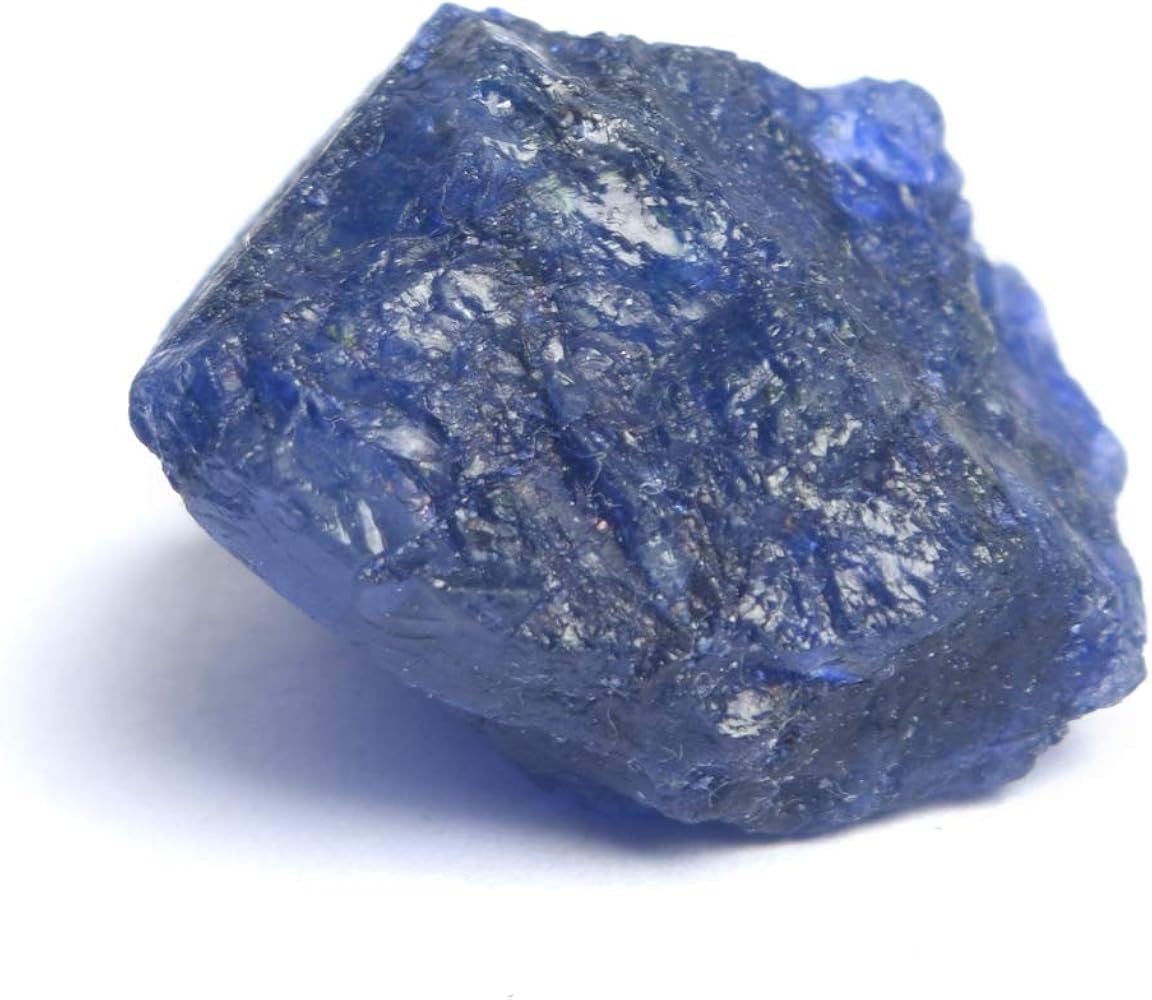
Description: Sapphire is one of the most well-known and desirable blue gemstones. While it comes in many colors, blue sapphire is the most iconic, often used in engagement rings and royal jewels.
- Color Variations: Rich royal blue, cornflower blue, teal-blue
- Mohs Hardness: 9
- Transparency/Luster: Transparent to opaque; vitreous luster
- Common Locations (Especially U.S. Dig Sites): Montana (notably the Yogo Gulch region), North Carolina
- Price/Value Range: $200 to $2,000+ per carat depending on color saturation, clarity, and origin
2. Aquamarine
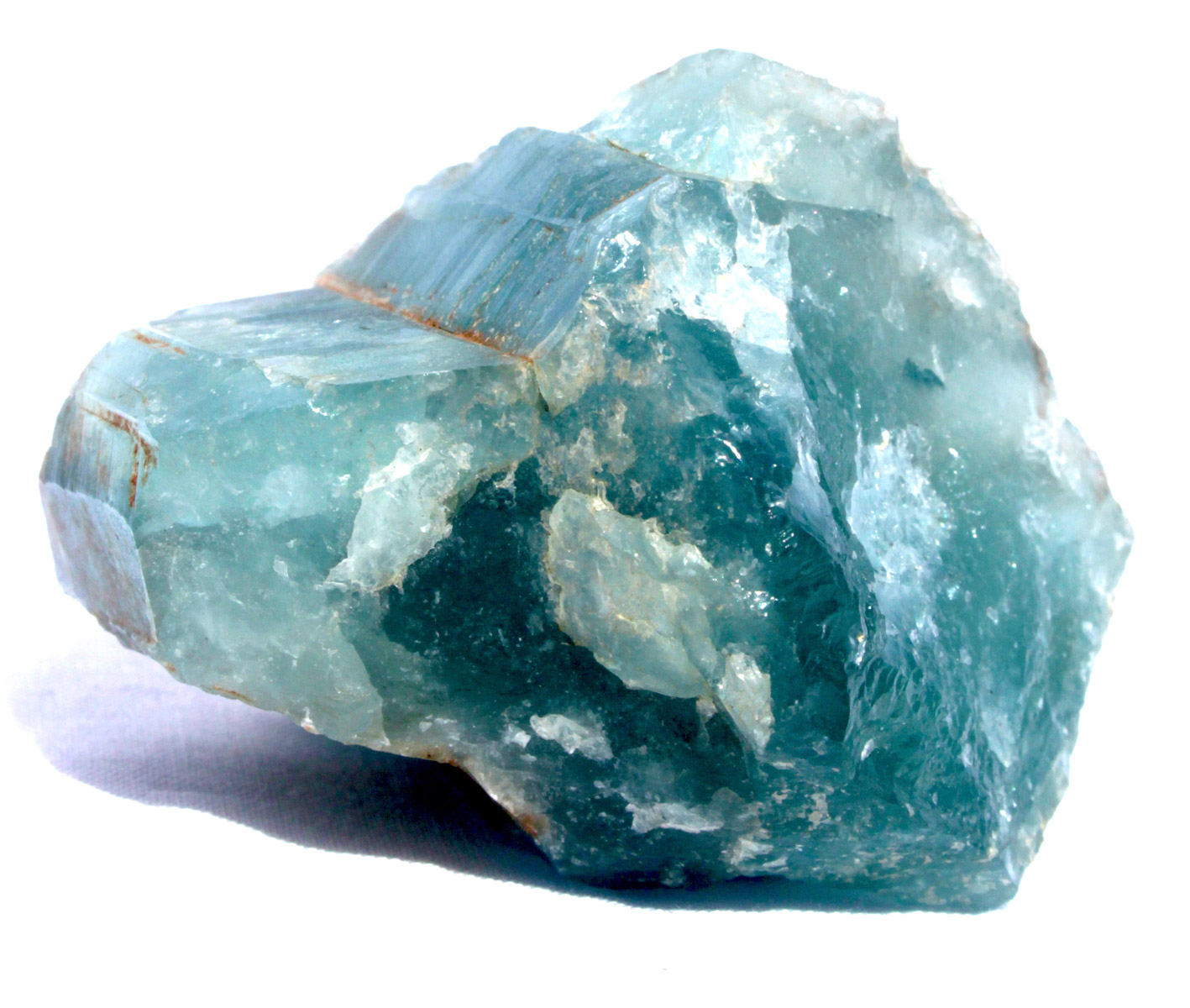
Description: A member of the beryl family, aquamarine gets its name from the Latin for "water of the sea." It's known for its light blue to bluish-green color and is a favorite for spring-themed jewelry.
- Color Variations: Light blue, seafoam, greenish-blue
- Mohs Hardness: 7.5 to 8
- Transparency/Luster: Transparent; vitreous
- Common Locations (Especially U.S. Dig Sites): Colorado (Mount Antero is a famous site), California, Maine
- Price/Value Range: $50 to $600 per carat, depending on size and clarity
3. Blue Topaz
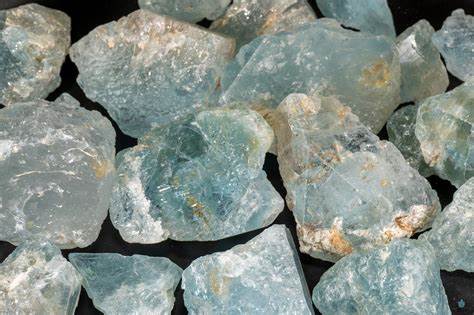
Description: Blue topaz is one of the most accessible and affordable blue gemstones. Naturally occurring blue topaz is rare, so most on the market are heat-treated.
- Color Variations: Sky blue, Swiss blue, London blue (deepest)
- Mohs Hardness: 8
- Transparency/Luster: Transparent; vitreous
- Common Locations (Especially U.S. Dig Sites): Texas (state gem), Utah, California
- Price/Value Range: $10 to $100 per carat, depending on treatment and shade
4. Turquoise
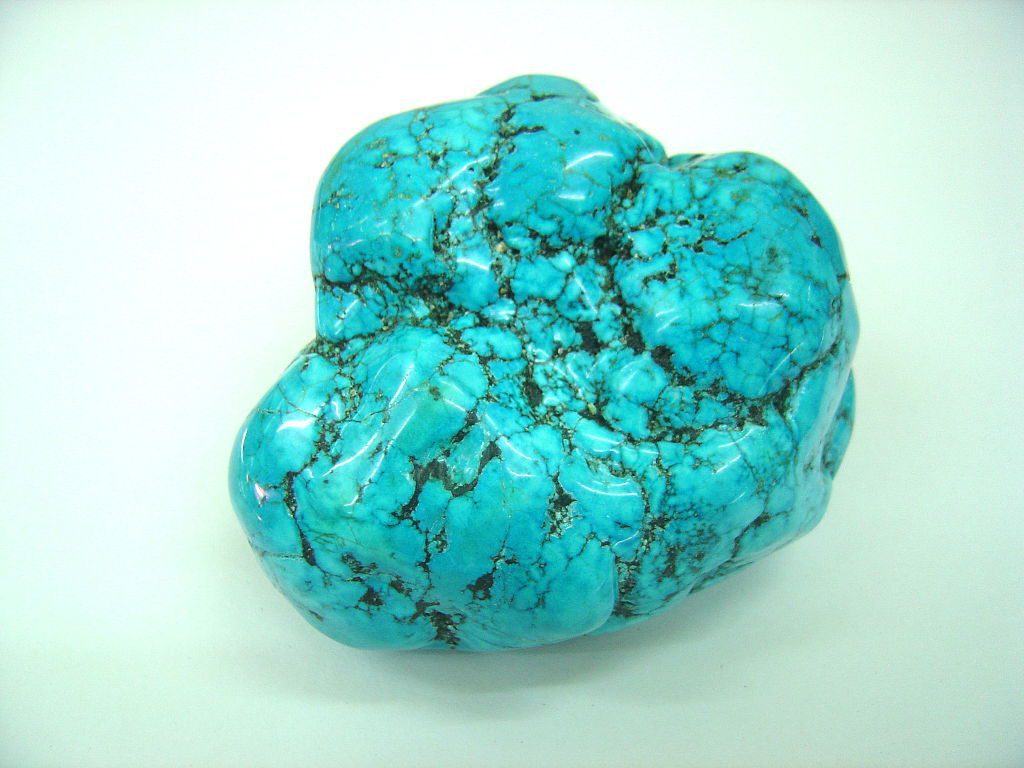
Description: An opaque stone prized since ancient times, turquoise is often associated with Native American jewelry. It is soft and needs protective settings.
- Color Variations: Sky blue, greenish-blue, robin's egg
- Mohs Hardness: 5 to 6
- Transparency/Luster: Opaque; waxy to dull luster
- Common Locations (Especially U.S. Dig Sites): Arizona, Nevada, New Mexico
- Price/Value Range: $1 to $10 per carat for lower-grade; $100+ for high-quality untreated stones
5. Lapis Lazuli
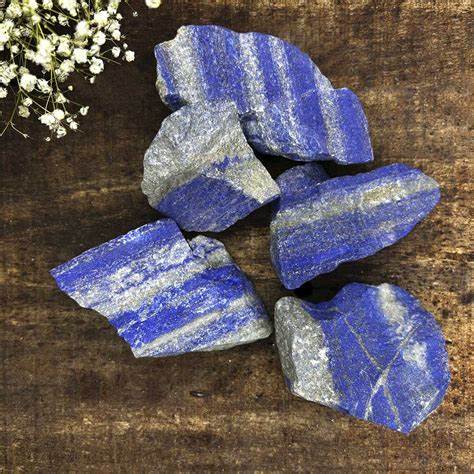
Description: A deep-blue metamorphic rock that has been mined for thousands of years, lapis lazuli is often speckled with gold-colored pyrite.
- Color Variations: Deep ultramarine, blue with white or gold specks
- Mohs Hardness: 5 to 5.5
- Transparency/Luster: Opaque; dull to greasy
- Common Locations (Especially U.S. Dig Sites): California, Colorado
- Price/Value Range: $5 to $100 per carat, depending on richness of color and amount of calcite or pyrite
RELATED READ: Lapis Lazuli vs. Other Blue Gemstones: A Complete Comparative Guide
6. Blue Zircon
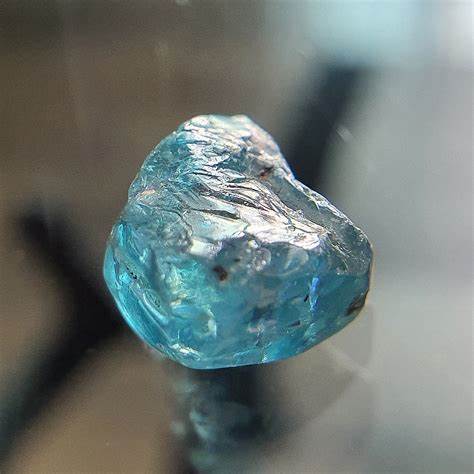
Description: Often confused with cubic zirconia, blue zircon is a natural gemstone known for its brilliance and fire, rivaling diamonds.
- Color Variations: Pale to deep blue (often heat-treated)
- Mohs Hardness: 6 to 7.5
- Transparency/Luster: Transparent; adamantine to vitreous
- Common Locations (Especially U.S. Dig Sites): Not commonly mined in the U.S.; some found in New York and North Carolina
- Price/Value Range: $50 to $500 per carat
7. Kyanite
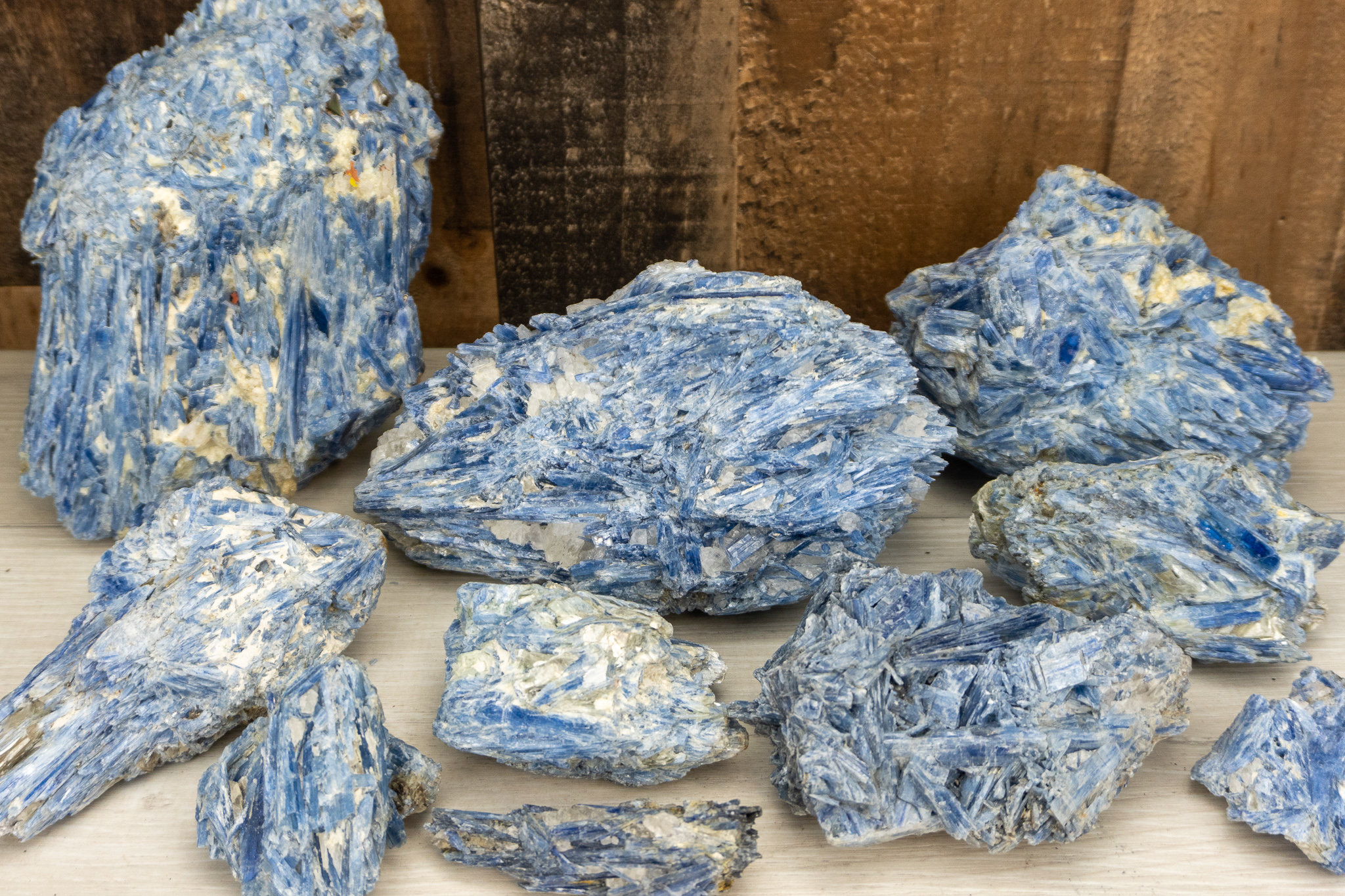
Description: Kyanite is a lesser-known blue stone that shows strong color zoning and a unique property called anisotropy, meaning it has different hardness levels in different directions.
- Color Variations: Deep blue, teal, light blue
- Mohs Hardness: 4.5 to 7 (varies depending on direction)
- Transparency/Luster: Transparent to translucent; vitreous to pearly
- Common Locations (Especially U.S. Dig Sites): North Carolina, Georgia
- Price/Value Range: $20 to $200 per carat
8. Blue Spinel
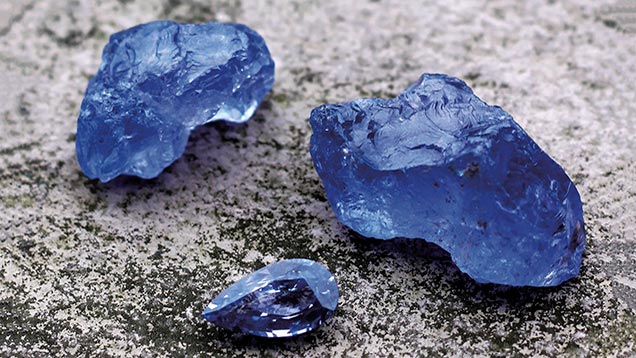
Description: Natural blue spinel is rare and was historically confused with sapphire. It's highly durable and displays vivid saturation.
- Color Variations: Steely blue, violet-blue
- Mohs Hardness: 8
- Transparency/Luster: Transparent; vitreous
- Common Locations (Especially U.S. Dig Sites): Rare in the U.S.; some found in Montana
- Price/Value Range: $200 to $800 per carat
9. Labradorite
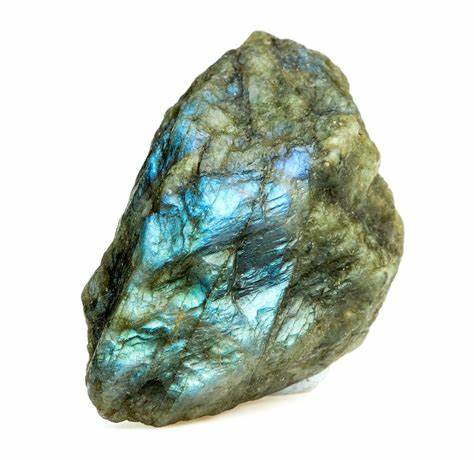
Description: Known for its dazzling play of color (labradorescence), labradorite isn't always blue, but the blue flashes it gives off make it a favorite.
- Color Variations: Gray-blue base with electric blue flashes
- Mohs Hardness: 6 to 6.5
- Transparency/Luster: Translucent to opaque; pearly to vitreous
- Common Locations (Especially U.S. Dig Sites): Oregon, Utah
- Price/Value Range: $1 to $10 per carat
10. Iolite
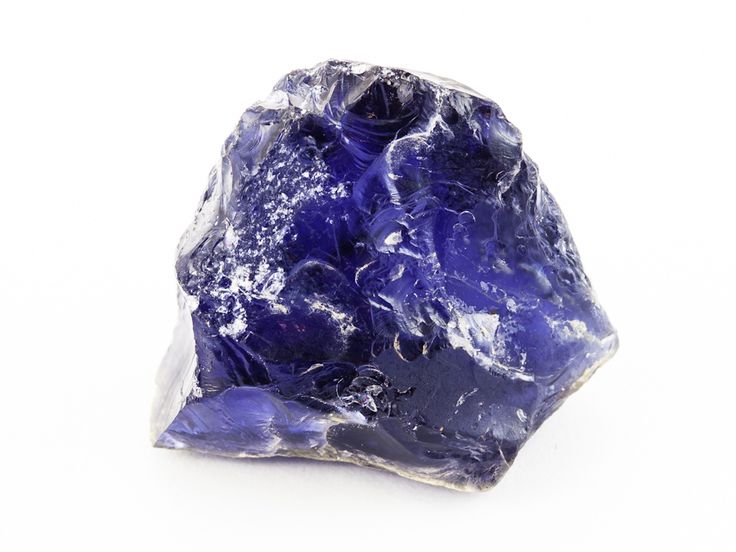
Description: Iolite, also known as "water sapphire," is a blue-violet gemstone. It is a variety of the mineral cordierite and has been historically used as a navigational aid because of its pleochroic nature (appearing different colors when viewed from different angles).
- Color Variations: Deep violet-blue to light blue. The color can appear to change depending on the angle, showcasing different hues of blue and violet, which is a key identifying feature of this stone.
- Mohs Hardness: 7 to 7.5
- Transparency/Luster: Transparent with a vitreous (glass-like) luster. Its high clarity and color-changing properties make it an attractive choice for jewelry.
- Common Locations (Especially U.S. Dig Sites): Iolite is found in several locations worldwide, including Brazil, Sri Lanka, and India. In the U.S., it can be found in states like Wyoming, Colorado, and Montana.
- Price/Value Range: $20 to $200 per carat, depending on the color and clarity.
11. Blue Chalcedony
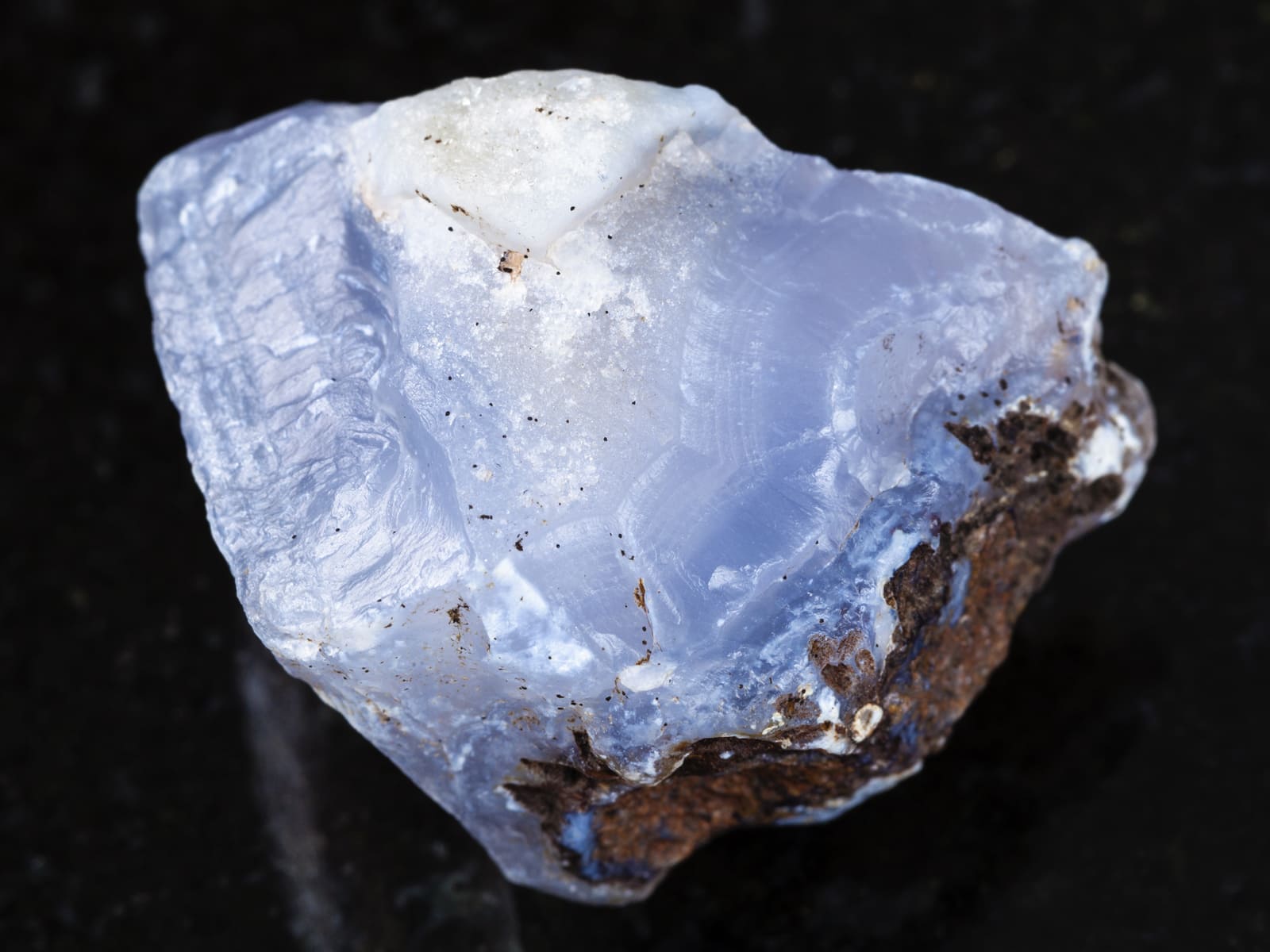
Description: Chalcedony is a type of cryptocrystalline quartz, meaning it consists of fine crystals too small to be seen with the naked eye. It can be found in a range of colors, but the blue variety is especially prized for its soft, translucent look.
- Color Variations: Chalcedony is primarily found in shades of blue, ranging from pale blue to deep sky blue. The color is often uniform, creating a smooth, serene appearance.
- Mohs Hardness: 6 to 7
- Transparency/Luster: Translucent to semi-transparent, and it has a waxy luster that gives it a soft, polished appearance.
- Common Locations (Especially U.S. Dig Sites): This gemstone is found in various parts of the world, including the U.S. (notably in regions like Oregon and Arizona), along with other sources in Africa and South America.
- Price/Value Range: $5 to $20 per carat, depending on the color and quality.
12. Blue Apatite
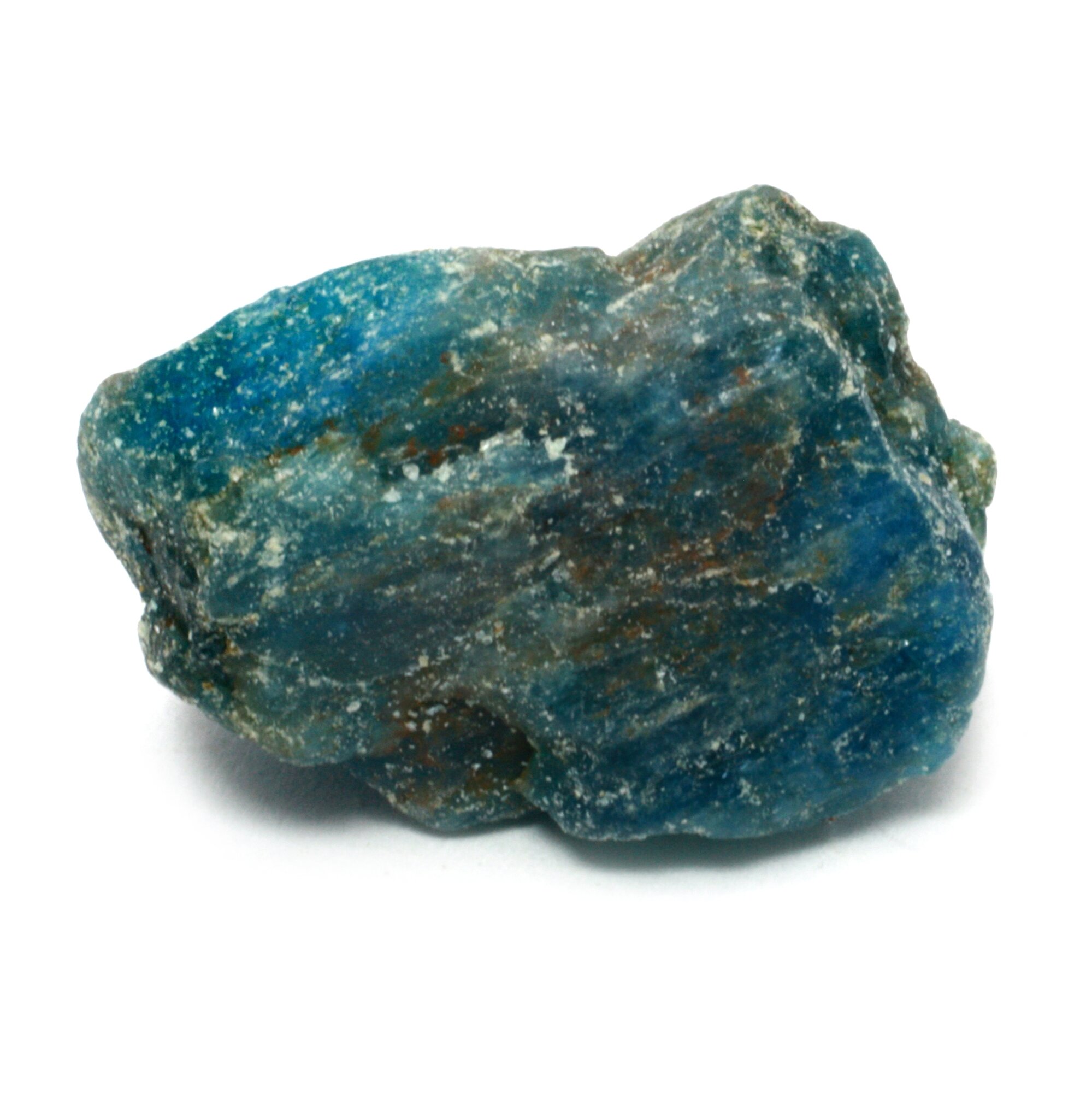
Description: Apatite is a group of phosphate minerals, and its blue variety is one of the most popular and vibrant. It is known for its strikingly bright blue color, often used in jewelry for its vivid hue and versatility.
- Color Variations: Apatite can range from a soft blue to a vivid turquoise. Some stones have a slightly greenish-blue tint, while others may appear more violet.
- Mohs Hardness: 5
- Transparency/Luster: Apatite is typically transparent to translucent and has a vitreous luster. Its clarity can vary, with some stones displaying a bright, glassy finish.
- Common Locations (Especially U.S. Dig Sites): Apatite can be found in locations such as Brazil, Myanmar, and Madagascar, but in the U.S., it's been discovered in Idaho and Maine.
- Price/Value Range: $10 to $100 per carat, depending on the quality, size, and color intensity.
13. Larimar
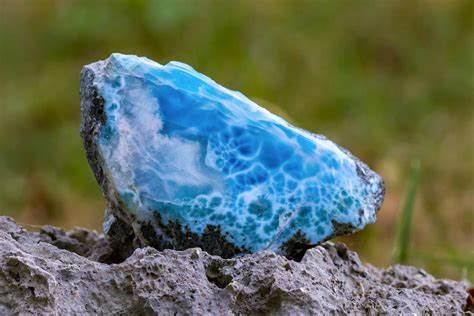
Description: Larimar is a rare blue variety of the mineral pectolite, exclusively found in the Dominican Republic. It is often referred to as the "Caribbean gemstone" because of its unique ocean-like color patterns.
- Color Variations: Larimar can range from a light, sky blue to a deeper turquoise. Some stones show white patterns or streaks, adding to their beauty and uniqueness.
- Mohs Hardness: 4.5 to 5
- Transparency/Luster: Larimar is typically translucent with a silky or pearly luster, often appearing smooth and fluid in appearance.
- Common Locations (Especially U.S. Dig Sites): Larimar is only found in the Dominican Republic, making it a highly sought-after gemstone in jewelry. It's rarely found in the U.S. except in specialty shops or as part of an imported collection.
- Price/Value Range: Due to its rarity, Larimar can be somewhat more expensive than other blue stones, with prices ranging from $30 to $200 per carat, depending on size and quality.
14. Blue Fluorite
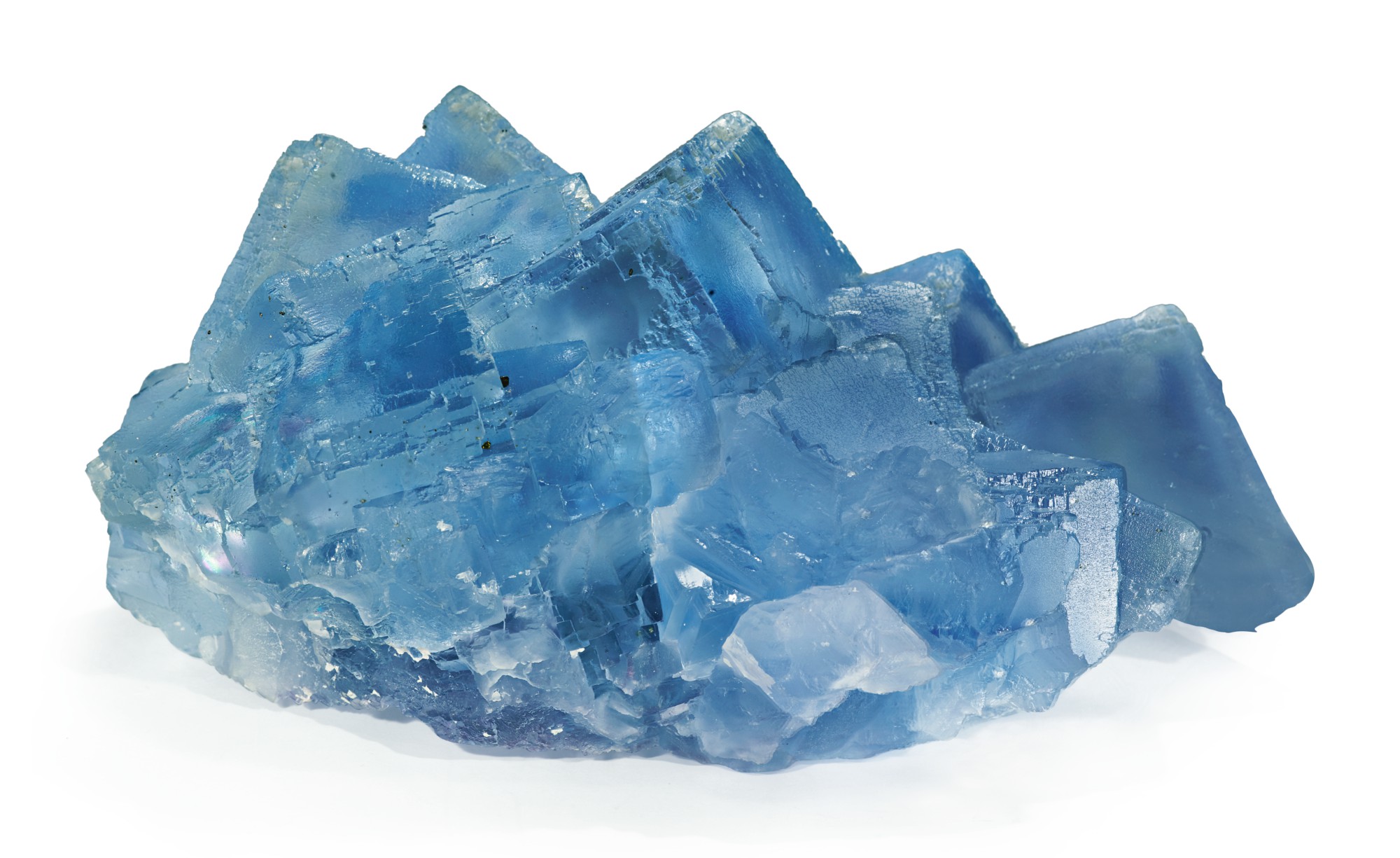
Description: Fluorite is a mineral that comes in a range of colors, with blue being one of the rarer and more sought-after varieties. It is often used in jewelry and decorative items for its striking color and translucency.
- Color Variations: Blue fluorite can range from a soft pale blue to a rich, vibrant blue. Some stones may exhibit a combination of blues and purples, offering a beautiful multi-toned effect.
- Mohs Hardness: 4
- Transparency/Luster: Fluorite is typically transparent to translucent, with a vitreous luster. The clarity of the stone can make it appear glassy, and it often displays a beautiful play of light.
- Common Locations (Especially U.S. Dig Sites): Fluorite is found worldwide, but blue fluorite is particularly rare. In the U.S., notable fluorite deposits can be found in places like Illinois, Kentucky, and Arizona.
- Price/Value Range: Fluorite is generally affordable, with blue fluorite typically ranging from $5 to $50 per carat depending on the size, clarity, and color intensity.
RELATED READ: Exploring the Diverse World of Purple Crystals and Gemstones
Blue Gemstones by Hardness (for Jewelry Use)
If you're choosing a blue gemstone for jewelry, especially rings or bracelets, you'll want to consider hardness:
- Highly durable (hardness 8-9): Sapphire, spinel, topaz
- Moderate durability (hardness 6-7.5): Zircon, labradorite, aquamarine
- Less durable (hardness <6): Turquoise, lapis lazuli
Blue Gemstones and Symbolism
Each gemstone has its own cultural and emotional meanings:
- Sapphire: Wisdom, royalty, truth
- Aquamarine: Calm, protection, communication
- Topaz: Love, clarity, self-expression
- Turquoise: Protection, healing, friendship
- Lapis Lazuli: Enlightenment, creativity, truth
How to Care for Blue Gemstones
Caring for blue gemstones depends on the stone's hardness and sensitivity. Here are some general tips:
- Avoid harsh chemicals: Especially for porous stones like turquoise.
- Clean with mild soap and water: Use a soft cloth or brush.
- Store separately: Prevent scratching by storing softer stones away from harder ones.
- Watch heat treatments: Don't expose stones like topaz or zircon to sudden temperature changes.
For high-value stones like sapphires or spinel, professional cleaning is recommended once a year.
Final Thoughts
Blue gemstones are more than just beautiful—they tell stories of geology, culture, and personal expression. Whether you're rockhounding in Montana for sapphires or collecting affordable pieces like blue topaz, these stones offer something for everyone.
And remember, the best gemstone for you isn't just about price or rarity—it's about what speaks to you. So go out there, dig a little, explore a lot, and find your perfect shade of blue.
Ready to start your rockhounding adventure? Check out our guides to public gem mining sites in the U.S., or explore more in our gemstone series right here on Rockhounding.org.
